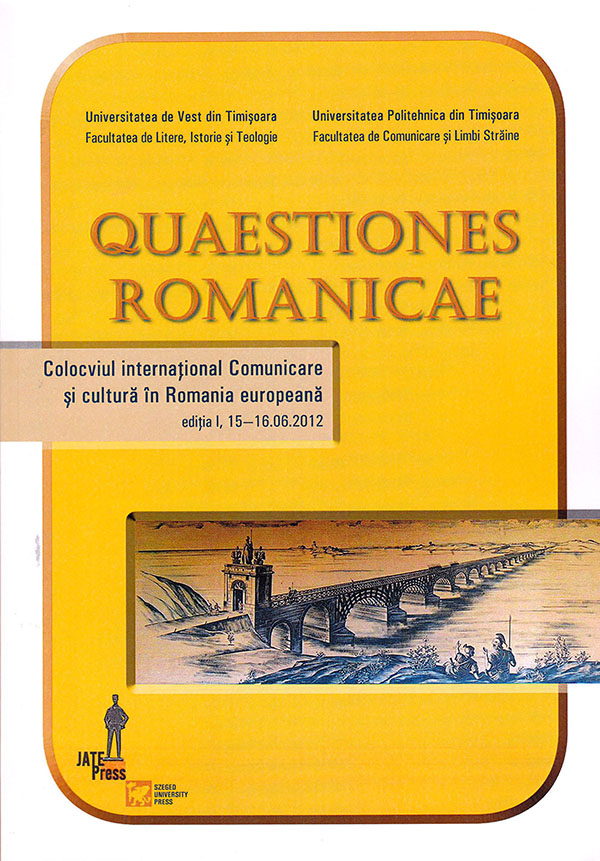Paese che vai pubblicità che trovi. L’uso degli spot pubblicitari nella glottodidattica dell’italiano
Abstract: (Paese che vai pubblicità che trovi. The use of advertisements in the Italian language teaching) The present paper has tried to emphasise the linguistic importance of audio-visual materials in the Italian practical and civilization courses, using two recent spots for Lavazza coffee, spots of 2012 starring the well-known actor Enrico Brignano. The source of our materials is the official site www.lavazza.it. The authentic materials allow us to discover some peculiarities of the recent colloquial language (substandard) with regional shades in pronunciation (e.g. the Romanesque pronunciation), the subtleness of linguistic games as a source of humour. A rich content of cultural stereotypes is also offered, as for example the Italians and the cult of coffee, the classical crowed of tourists in the Italian museums, all built up in an exceptional humorous key. The purpose is to make the learners of the Italian language aware of the linguistic peculiarities - unknown to them until that moment - as well as to try to understand different behaviours and stereotypes, taking into consideration the fact that they do not have the same culture. Aspects of interculturalism, different styles of life and specific values for every foreign student are marked. Different points of view and different perceptions appear, but they can also be very motivating.
Keywords: spot, language teaching, interculturalism, audio-visual materials.
Riassunto: Nel nostro intervento ci proponiamo di mettere in risalto l’efficacia linguistica del materiale audiovisivo nell’ambito dei corsi pratici e di civiltà italiana, facendo ricorso a due recenti spot pubblicitari per il caffè LAVAZZA. Si tratta degli spot del 2012, nell’interpretazione del noto attore italiano Enrico Brignano. La fonte del nostro materiale è il sito ufficiale www.lavazza.it. Il materiale autentico ci permette di scoprire alcune peculiarità del linguaggio attuale di livello medio bassso con venature regionali nella pronuncia (si può sentire la pronuncia romanesca), le sottilità dei giochi linguistici come fonti di umorismo. Offrono in più un contenuto ricco in stereotipie culturali come per es. gli italiani e il culto del caffè, le classiche folle dei turisti ai musei italiani, tutto relizzato in una squisita chiave umoristica. Il fine è quello di far conoscere agli apprendenti le particolarità linguistiche, sconosciute loro fino al momento della lezione, nonchè di provare a comprendere gli atteggiamenti, gli stereotipi, visto che non condividono la stessa cultura. Si tratta di aspetti di interculturalità, di stili di vita diversi, di valori specifici ad ogni studente straniero (si possono avere più punti di vista, più percezioni del mondo attraverso sfumature diverse e inattese, ma allo stesso tempo molto stimolanti).
Parole-chiave: spot pubblicitari, materiale audiovisivo, registro colloquiale, stereotipi culturali, interculturalità.
